The special ability of chameleons to change their body color in order to blend in with their surroundings has always fascinated scientists. This trait is more profoundly seen in chameleons. However, did you know that other species also possess this trait?
Perhaps you are wondering if your pet has this trait as well. If you own an axototl, that might be true. Axolotls can change their body color at will. Axolotls’ color changes are not quite like those of chameleons. Your pet’s color can be affected by a variety of factors.
Are you intrigued? In this article, we’ll take a deeper look into the various reasons behind axolotls changing their color. Let’s get straight into it!
What Makes an Axolotl Change color?
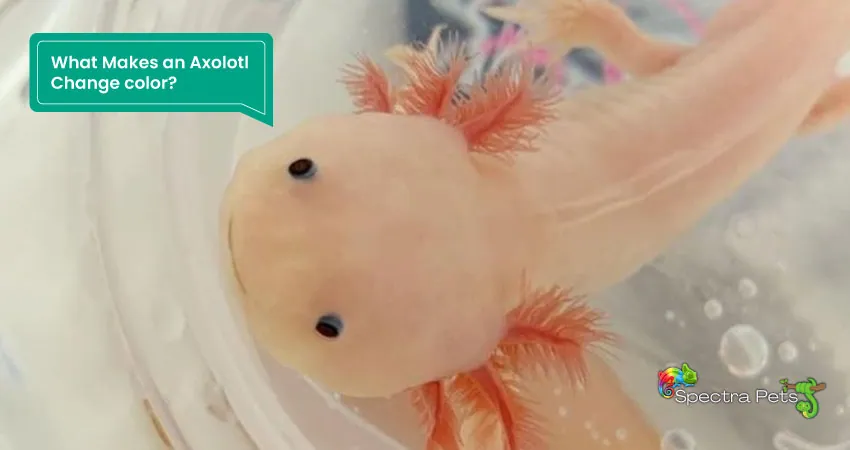
Axolotls have the ability to change their body color, just like salamanders. It is especially noticeable on their skin as well as on their gills. According to a report by Tank Origin, various developmental and environmental factors will naturally affect how they develop and change color. These factors include their genetic structure, level of activity, physical condition, and diet.
These goofy amphibians can change their body color if they get sick or infected. The color change may be permanent in case the animal is infected with parasitic, bacterial, fungal, or viral infections. These can take the form of patchy, uneven regions of discoloration rather than significant color changes.
Another potential reason behind this may be their diet. The food they consume might have an impact on the pigmentation as well.
Stress is another factor you need to consider when thinking about the animal changing its color. High stress may result in alterations to physiology, which may include the body’s hue.
Lastly, your axolotl may be a cross-breed of different morphs. As it possesses genes from two different parents, it may show alterations in body color as it matures further. It is a natural process, so you don’t need to worry.
Why Are Axolotls Different Colors? Do Axolotls Gills change color?
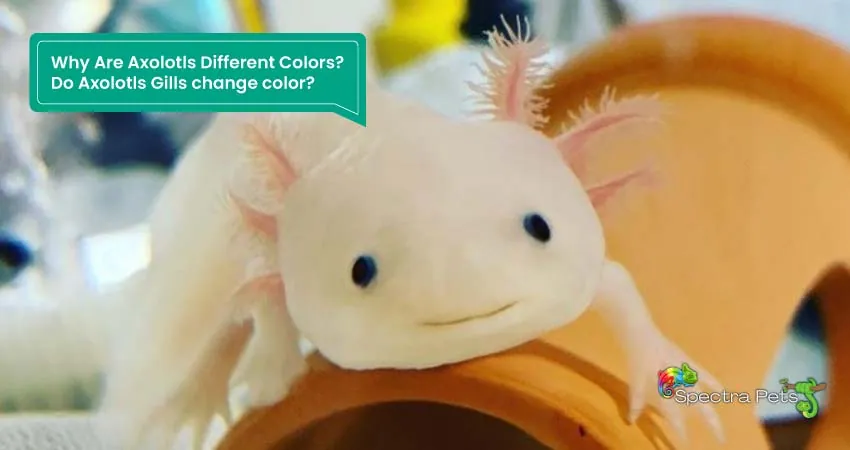
The mixture of pigments in axolotls’ skin gives them their distinctive color. Pigments are found in color-determining cells. They generate a particular amount of pigmentation based on their genetic makeup. The following three types of pigment cells are:
- The eumelanin(brown and black) pigment is found in melanophores.
- Carotenoids, flavins, and pteridines(orange, yellow, and bright red) are present in xanthophores.
- Crystallized purines are found in iridophores (gold sparkles and reflective appearance).
These pigment cells are also present on the gills. So, the gills can change color as well.
Do axolotls change color when stressed?
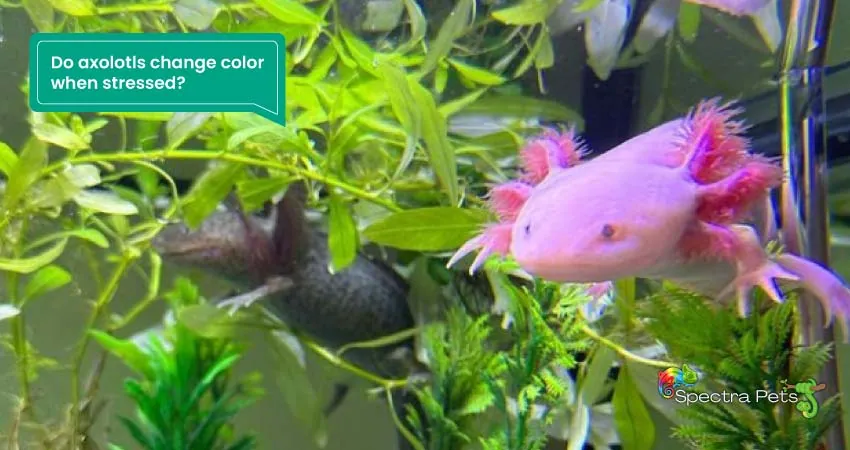
The random color change of an axolotl may be interpreted differently depending on the situation. The amphibian may be under potential stress, which could be a reason behind the sudden color change. This can also happen if the animal loses blood from some random injury.
How Many Axolotl Colors Are There?
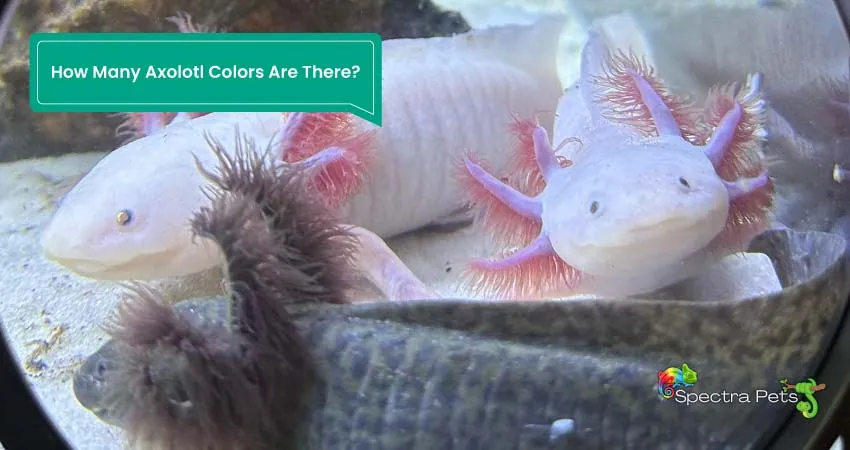
The wide range of colors that axolotls come in may overwhelm you if you’re seeking one as a pet of your own. Over 20 distinct colors and patterns are available for axolotls. These colors are either acquired naturally or synthetically through breeding.
The most common colors found on these animals include pale hues such as pinkish-white and pale gray. They also come in darker hues, namely olive, brown, and black.
What Kind of Axolotls Change Color?
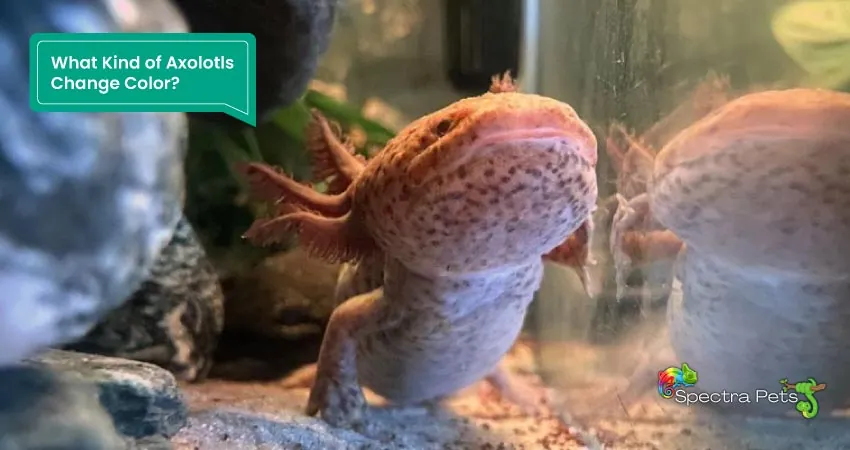
Black melanoid axolotls can change colors based on their substrate. This is a temporary color change. When photographed with a flash, a black melanoid could appear brownish or gray. The melanoid will become more translucent and take on a lighter, grayish hue if you use a white substrate. They will become very dark if kept on a black surface. They will lighten to a variety of gray shades when exposed to colors between white and black.
What are the best colors on Axolotls?
Axolotls are a species of amphibian that is related to salamanders. An axolotl’s body can have a variety of particular hues and patterns. White, black, gold speckles, and fluorescence are their four main colors. Additionally, the coloring on their gills can vary from red to pink.
Among many others, here are the colors that are considered to suit the animal the most:
- Golden Albino
- Piebald
- Copper
- Leucistic
- Wild Type
- Mosaic
- Lavender
- White Albino
- Chimera
- Firefly
- Black Melanoid
- Enigma
Golden Albino
Golden Albino Axolotls sport a yellow-gold body color with pink or yellow eyes. They have reflective speckles all over their skin and peachy gills.
This specific morph of axolotl is special because it keeps xanthophores, which give it this unique color. Some of them can also have iridophores that give them the appearance of having a gold leaf-like covering.
Piebald
This morph of axolotl has a white body color, black eyes, and gills with a red hue. There are some patches on their backs and faces that are gray or green and have a symmetrical pattern.
The genes of this breed are extremely rare. They are a leucistic morph with high melanophore concentrations on the backs as well as on the heads.
Copper
The copper morph variants have gray eyes and gills, as well as a light-gray skin that has copper speckles.
This variation is a case of albinism that is not quite severe. There is a lower amount of melanin and pteridine present in this variant.
Leucistic
The leucistic morphs are extremely similar to the appearance of albinos. They have translucent skin with gold, shiny freckles, pink-reddish gills, and dark eyes. This breed is quite elusive in the wilderness, but quite common as a pet.
This morph is one of the most beautiful axolotl morphs.
Wild Type
Wild type morphs have golden freckles that are noticeable because of the presence of iridophores. Their bodies are olive-green, the gills are purple, and the bellies are pale white.
Mosaic
This variant has red gills and many golden, black, and white flecks. Mosaics are a distinctive morph, having multicolored eyes and showing unique dual coloring that they inherit from their parent axolotls.
Mosaics usually come from combining albino and melanistic axolotls together. However, you cannot force them to breed, and as a result, they are very rare.
Lavender
You may think that a lavender axolotl is not an animal from this planet and that it has arrived from outer space due to its unique coloring. This is my personal favorite morph among all possible morphs of axolotls.
The lavender morph is, as the name suggests, lavender in color, with silver freckles that give them their unique appearance, and purple-red gills.
These animals are extremely rare, but their unique appearance makes them highly sought after.
White Albino
These are another variation of the albino morph. This morph boasts pure white skin that is almost translucent and has pinkish gills.
There are no xanthophores or melanophores in this species. Iridophores are present, but only in the gills.
As I’ve mentioned before, their appearances are extremely similar to those of the leucistic variant. This variant also has poor sight because their eyes lack any pigment at all.
Chimera
Chimeras are extremely rare morph that consists of two different morphs that show their own properties on one body. The two different morphs can be seen being split directly on the middle point of the body. Their rarity has introduced a debate over classifying this as a morph or a phenomenon.
The select chimeras that came into existence are known to inherit one-half of their color from an albino parent and the other from a wild-type parent.
Firefly
Firefly axolotls have a tail that glows in the dark, just like fireflies. The rest of their body is pitch black, with some white freckles here and there and some red on the gills.
This breed was artificially developed by trying to make a white type that also has a white tail, and the man behind it is named Lloyd Strohl.
Black Melanoid
Black melanoids are primarily black, although sometimes they can be dark green as well. Most of the time, this variant will have a gray-purple underbelly and purple gills.
This morph can take on the color of the substrate near it. Substrates that are darker result in a black melanoid having a darker appearance, and lighter substrates will make it brighten up. This color change is only temporary.
Enigma
This variant is a unique axolotl that has red gills, gray skin, golden eyes, and a white belly. This species is a variation of the wild type that has high concentrations of iridophores all over the body, giving the unique impression of being covered in gold leaves.
Currently, there is just one axolotl of this morph in existence.
Do Axolotls Change Color With Age?
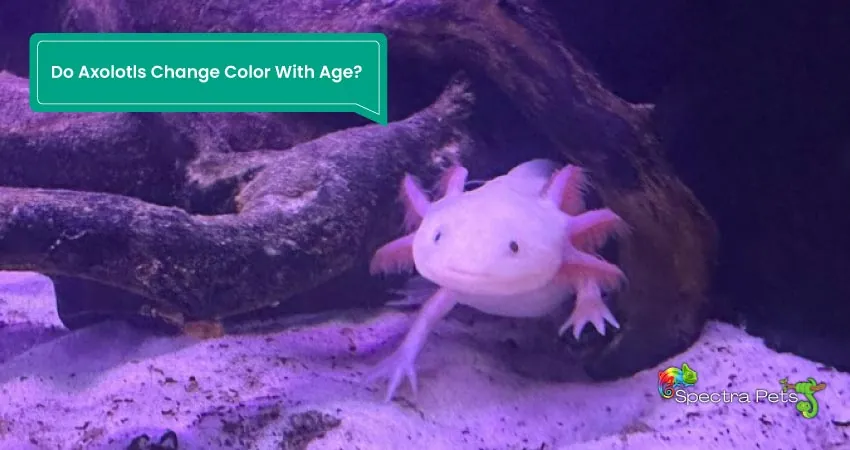
Axolotls start to develop a stunning golden color as they get older. The golden albino variant lacks melanophores, just like the majority of axolotls that have a brighter color on this list. This morph is distinct because it keeps the xanthophores that give it a golden hue.
What is the rarest axolotl color in real life?
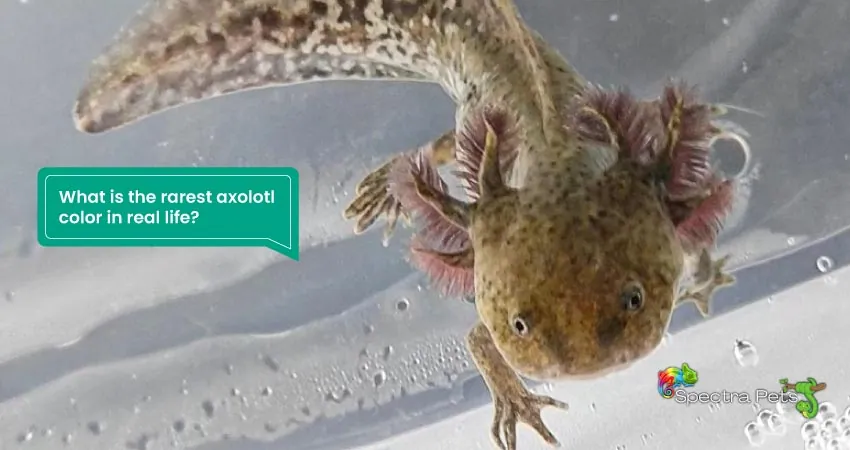
Axolotls that have undergone a lavender morphosis are extremely rare. The body color of these specific animals can be lavender as well as light gray. There are a lot of spots on its body. The color of these spots can range from dark gray to pale silver. These spots contrast extremely well with the purple hue that these animals have.
Wrapping Up
If you see your pet axolotl suddenly change its color, don’t get panicked. Just observe the animal and identify the exact reason. It may just be changing color naturally because of its genetic makeup.
Did you know that axolotls can morph into salamanders as well? Check out this article on axolotls turning into salamanders to learn more!
